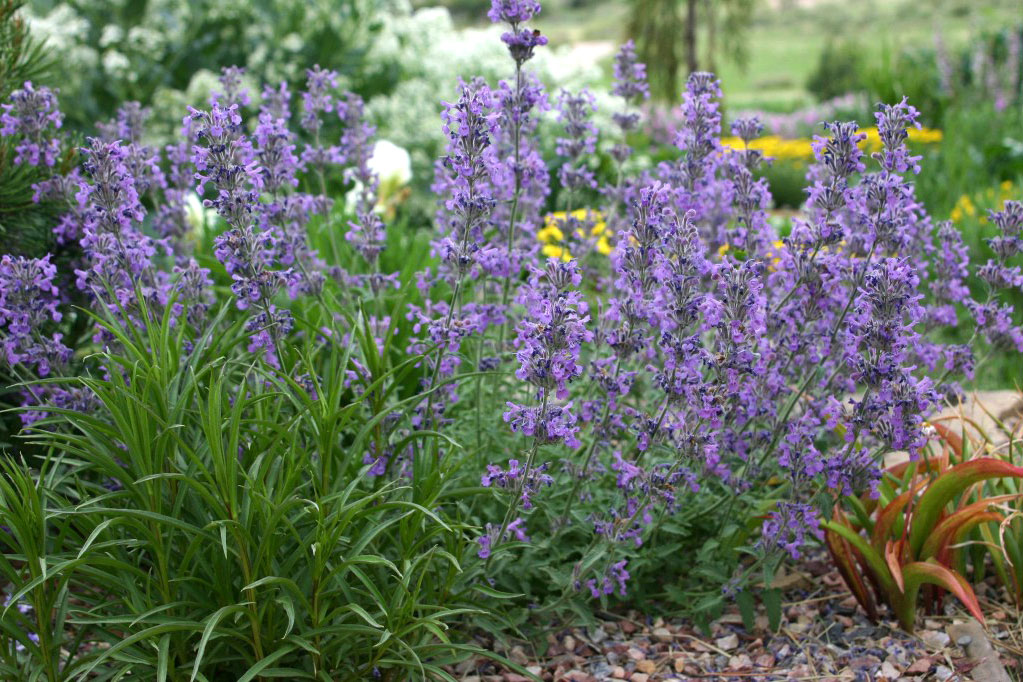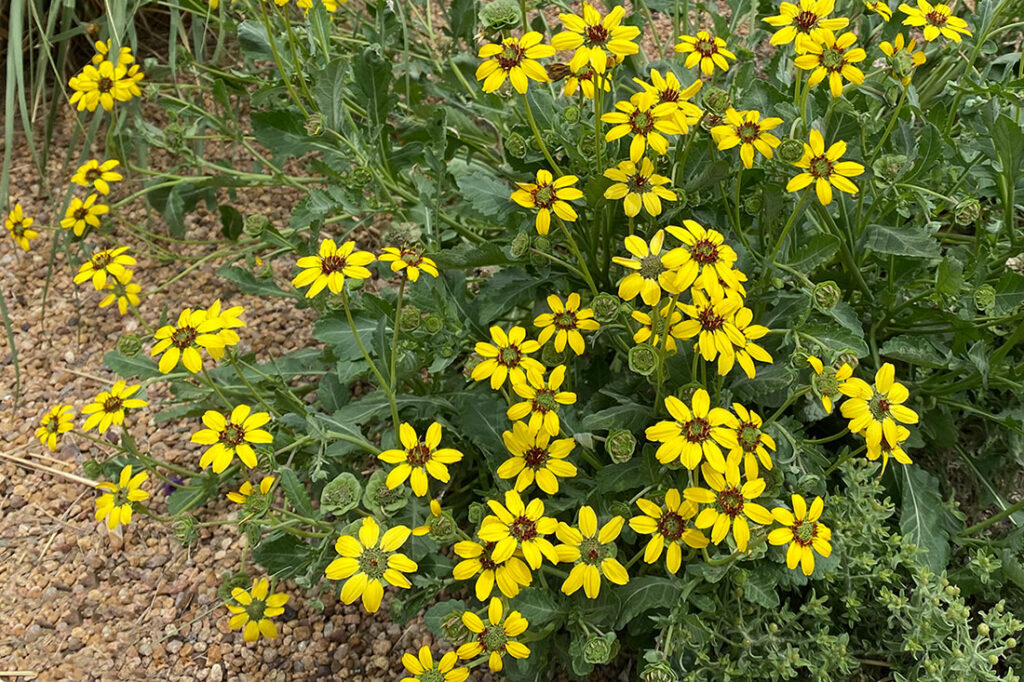Supercharge Your Garden With Color
- 2022-07-07
- By mkirk
- Posted in Horticulture, The Garden Buzz
By Ann Kendall, Apprentice Master Gardener
One of the tricky things about growing a perennial garden can be getting color to last. Many perennials bloom for only a few weeks. Then they pack up shop until next year. Luckily, there are long-blooming perennials that break that trend. Among them are three plants that offer long-lasting color while also being popular with pollinators. In addition, all they thrive in low-water gardens.
Little Trudy® Catmint (Nepeta ‘Psfike’)

For colorful blooms that go on… and on… and on, Little Trudy is your gal. This catmint produces lavender flowers on silver-green foliage from April to fall. Some catmints can get unruly, swallowing up garden paths and sidewalks as they grow. But Little Trudy is a compact, low-growing catmint that plays nice in the garden. It’s an easy-going plant that thrives in a range of conditions.
Sunlight: Full sun to part shade
Soil: Clay, loam or sand
Moisture: Moderate to xeric
Zones: 4-9
Tip: It can reseed mildly. Cut back in July to encourage new blooms.
Chocolate Flower (Berlandiera lyrata)
Are you craving dessert? You may be, after smelling chocolate flower. This native wildflower fills the air with a rich, chocolate aroma in the morning. It produces yellow, daisy-like flowers nearly all summer.

Sunlight: Full sun
Soil: Well-drained clay or sand (needs good drainage)
Moisture: Low to xeric
Zones: 4-9
Tip: Cut back in July to encourage new blooms. Keep it on the dry side once established. It reseeds easily and doesn’t respond well to highly amended soils.
Sunset Hyssop (Agastache rupestris)

For a splash of late season color, sunset hyssop brightens gardens with pink-orange flowers from August to frost. Native to the Southwest, this plant attracts hummingbirds and bees and can reseed.
Sunlight: Full to part sun
Soil: Loam or sand
Moisture: Low to xeric
Zones: 4b-10
Tip: Keep it on the dry side once established. Plant in full sun or warm microclimates to encourage a longer life.
Try any or all of these three long-blooming perennials in your garden. You won’t be disappointed.
Horticulture Resources
- Garden Buzz Archives
- CSU Extension Resources
- Colorado Master Gardener Program
- Foothills to Plains Native Plant Master Program
- Native Bee Watch Community Science Program
- The Co-Hort Blog
- PlantTalk Colorado
- Soil Testing
- Plant Select
- Emerald Ash Borer
- Japanese Beetle
- Colorado State Forest Service
- Ask an Expert


